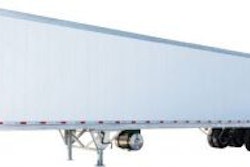 Sarah House, senior economist, Wells Fargo Securities, speaks Tuesday at the 2019 TRALA Annual Meeting in Orlando, Fla.
Sarah House, senior economist, Wells Fargo Securities, speaks Tuesday at the 2019 TRALA Annual Meeting in Orlando, Fla.Though it isn’t quite humming like it once was, the U.S. economy still appears strong enough to set an all-time record for economic expansion within the next two months, Wells Fargo Securities’ Senior Economist Sarah House told attendees at the 2019 Truck Renting and Leasing Association (TRALA) Annual Meeting Tuesday in Orlando, Fla.
Detailing the state of the economy entering the second quarter, Moore says the U.S. economy’s blips last fall and into Q1 shouldn’t be viewed as the start of a downturn but instead as the result of a mature economy reverting back to trend.
“Folks are getting a bit nervous about when that [next] downturn will come, but expansions don’t die of old age,” says House. “They get murdered by the Fed.”
House is joking, of course, but says the factors likely to end America’s current economic expansion remain minor inconveniences rather than major detriments. The market might not be growing at 3 or 4 percent anymore, but 2 to 2.5 percent growth appears likely for the immediate future, she says.
“Overall growth is moderating and moving back toward trend. It’s not falling off,” says House.
Yet House also adds that she understands the roots to the anxiety found in pockets of the market, referencing an inverted yield curve, rising Federal debt (and potential for reduced federal spending) and several labor issues as drags on current economic input. Regarding the yield curve in particular, House says an inversion has preceded the last seven U.S. recessions, but not all inversions directly lead to recessions and, in some cases, the yield curve can invert “more than a year and half” ahead of a recession.
In the labor market, House says employee productivity as actually on the rise. It’s labor availability that’s becoming problematic, she says. March marked another month in which the U.S. economy had more open positions that unemployed.
“Finding qualified workers has become a major challenge,” says House. “Our issue is one of supply.”
She adds that labor force participation is starting to help this spring — participation has climbed in recent months — but overall percentages remain at their lowest levels since the 1990s. House says this labor pressure also is hampering overall corporate profits, which can reduce investment and weaken growth potential.
That’s an area where House references how external factors could impact the market. “If financial markets are on edge enough, they could talk themselves into a recession,” she says.
But the economy has strong points, too. House points to an uptick in single-family housing starts, coupled with reduced debt-to-income ratios for households and strong consumer confidence indices as positive factors. Another benefit is the country’s global standing. The U.S. economy isn’t booming but it is in better shape than the Eurozone and China — the latter of which is on pace to have its weakest growth year since 1990.
Overall, she says Wells Fargo potential recession index has ticked up recently but remains lower than 10 percent. For reference, that same recession index surpassed 10 percent in 2012 and nearly 30 percent in 2016 though the economy continued to grow.
“We are still seeing a decent rate of growth and are on track for another pretty good year,” she says.











